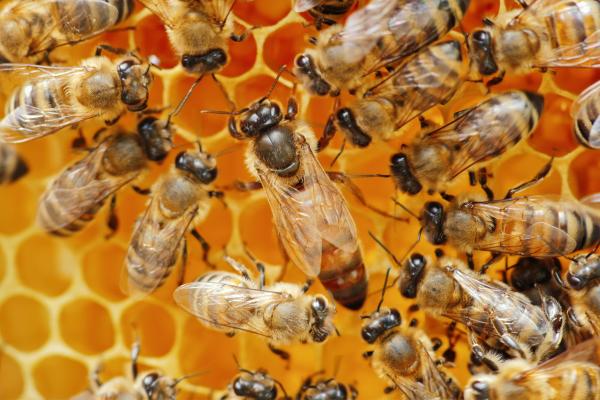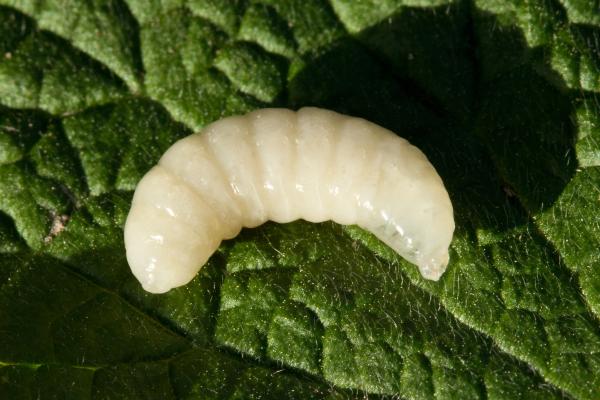The size of the queen bee is 2 centimeters. She hatches from an egg, goes through the larval and pupal stages, and finally becomes an adult. She lives for 2 to 5 years.
Bees are eusocial insects, meaning they have a complex social structure organized into castes. In a hive, we find sterile worker bees that gather food; male drones whose role is to mate; and the queen bee, the only female in the colony capable of reproduction and producing offspring. For beekeepers, it is essential to be familiar with the queen’s morphology because a hive cannot exist without her—she is the one who keeps the entire colony functioning. Below, learn more about the queen’s size, how she is born, and how long she lives.

Index
The queen bee is distinguished by her larger size, especially during her reproductive phase. On average, she measures 2 centimeters, compared to the 1.5 centimeters of worker bees.
The queen’s primary responsibility is to mate with drones and lay fertile eggs. Only one queen is needed per colony because she produces all the eggs required. Remarkably, she can store up to 5 million drone sperm cells and use them throughout her life. To appreciate her reproductive capacity, note that she lays around 2,000 eggs per day. Because of this critical role and her responsibility for the colony’s progeny, the queen is larger than other castes.
Other morphological traits that help differentiate the queen include smaller wings and a long, smooth abdomen. The abdomen is more developed to house the oviducts responsible for egg formation. The wings are smaller because the queen does not need to fly daily.
Additional Characteristics
She lacks pollen-collecting structures since she does not gather food.
Typically, there is only one queen per hive, and no colony can persist without one.
She can sting but does so only to fight rival queens for the colony.
She secretes mandibular pheromones that serve multiple roles: attracting drones for mating and keeping the swarm cohesive. These pheromones also regulate behavior—suppressing aggression among the colony while stimulating labor and productivity.
Like other castes, the queen starts from an egg. However, her egg is laid in a specially large cell. After 3 to 5 days, the egg hatches into a larva, the active feeding stage before metamorphosis. All larvae are fed royal jelly by workers for the first three days.

After this period, only future queens continue to receive royal jelly, while worker and drone larvae switch to a diet of honey and bee bread. Royal jelly is protein-rich and triggers the development of reproductive organs.
Once the larva stores enough nutrients, it enters the pupal stage for about seven days, during which it undergoes metamorphosis. Although the pupa appears motionless, many internal changes are occurring.
After pupation, the new queen emerges fully formed. She embarks on mating flights—called nuptial flights—to mate with drones. During this flight, she stores sperm and then returns to the hive to begin laying eggs.
The queen bee lives approximately 2 to 5 years. Aging is marked by a gradual decline in egg-laying capacity until she dies.

When a queen nears the end of her life, she must be replaced to keep the colony alive. There are two main methods:
Raising a new queen: Workers select one egg and feed the larva royal jelly throughout its development.
Introducing an external queen from another hive.
Another possibility is swarming: if a new queen matures while the old queen is still present, the old queen may leave with at least half the workers to form a new colony, leaving the new queen to take over the original hive.
Beekeeping
Cooper, O. (2021). Beekeeping Guide For Beginners: The Complete User's Guide To Keeping Bees And Their Colonies And Making Their Bees Thrive. Publisher: Tektime.
Li, C. (2021). Environmental and Natural Resources Engineering. Publisher: Springer International Publishing.
animal tags: Queen Bee
We created this article in conjunction with AI technology, then made sure it was fact-checked and edited by a Animals Top editor.